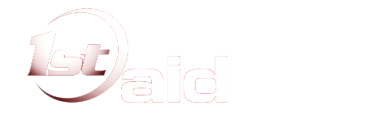Impetigo is a common and very contagious infection of the skin that usually affects children and infants. It is characterized by red sores that develop on the face especially on the nose and mouth and on the feet and hands of the child. Then sores burst and develop honey-colored crusts.
This condition usually happens in warm and humid environments and spread easily with direct contact with other people. The bacteria enter the body once the skin becomes injured or damaged due to other skin conditions such as poison ivy, eczema, insect bites and cuts or burns.
Forms of impetigo
- Nonbullous impetigo – the most common form and caused by both staphylococcus and strep bacteria. It is characterized as tiny red papules with similarities to insect bites. The lesions eventually turn into small blisters and then to pustules and will scab over. It affects the nose, face and can affect the arms and legs. Sometimes, the lymph nodes become swollen.
Sores that begin as small red dots and eventually becomes a blister and burst open and cause itchiness without pain. - Bullous impetigo – this condition is caused by staph bacteria. It produces a toxin that lessens cell-to-cell stickiness or adhesion and cause separating the top layer of the skin or epidermis and the lower layer or dermis. This result to formation of a blister or bulla. The bulla can form in any areas of the skin, especially the buttocks and the trunk. The blisters are delicate and filled with yellow colored fluid. It breaks with the overlying or “roof” of skin lost, and cause red, raw skin with a ragged edge. Crust will develop and eventually disappears when already healed.
Symptoms
- Sores the ooze fluid and looks crusty
- Development of rashes on the affected area
- Sores that begin as small red dots and eventually becomes a blister and burst open and cause itchiness without pain.
- Skin lesions
- Swollen lymph nodes
- Honey-colored crust forming after pustules burst
- The sores increase in number and size and become larger than a coin or as small as the size of a pimple.
Treatment
- Soak the affected area using warm water. Remove the top brown scabs by pressing a wet and warm cloth to scabs for a least a few minutes. Another alternative is soaking the area in warm water to soften the scabs. Using a wet and soapy washcloth rub the area and then rinse with water. Separate or keep the washcloth from other people to prevent spreading of the rashes.
- Apply the prescribed over-the-counter antibiotic ointment to lessen the pain and the inflammation of the rashes. Wear gloves or a finger cot before applying the ointment. If gloves are not available, make sure to wash the hand thoroughly after applying the ointment.
- Take the prescribed antibiotic pills to lessen extensive or resistant rashes.
- Keep the affected area clean and for fast healing of the condition by using water or an antibiotic wash. Prepare antibiotic wash using white vinegar to prevent the spread of infections and dries up the rashes. Mix 1 tablespoon of white vinegar in 2 cups of lukewarm water. Soak a cotton ball in the solution and use it in washing the affected area. Pat the skin dry, apply an over-the-counter antibiotic ointment and then cover it lightly with gauze. Repeat the process at least 2-3 times every day until infection disappears.

